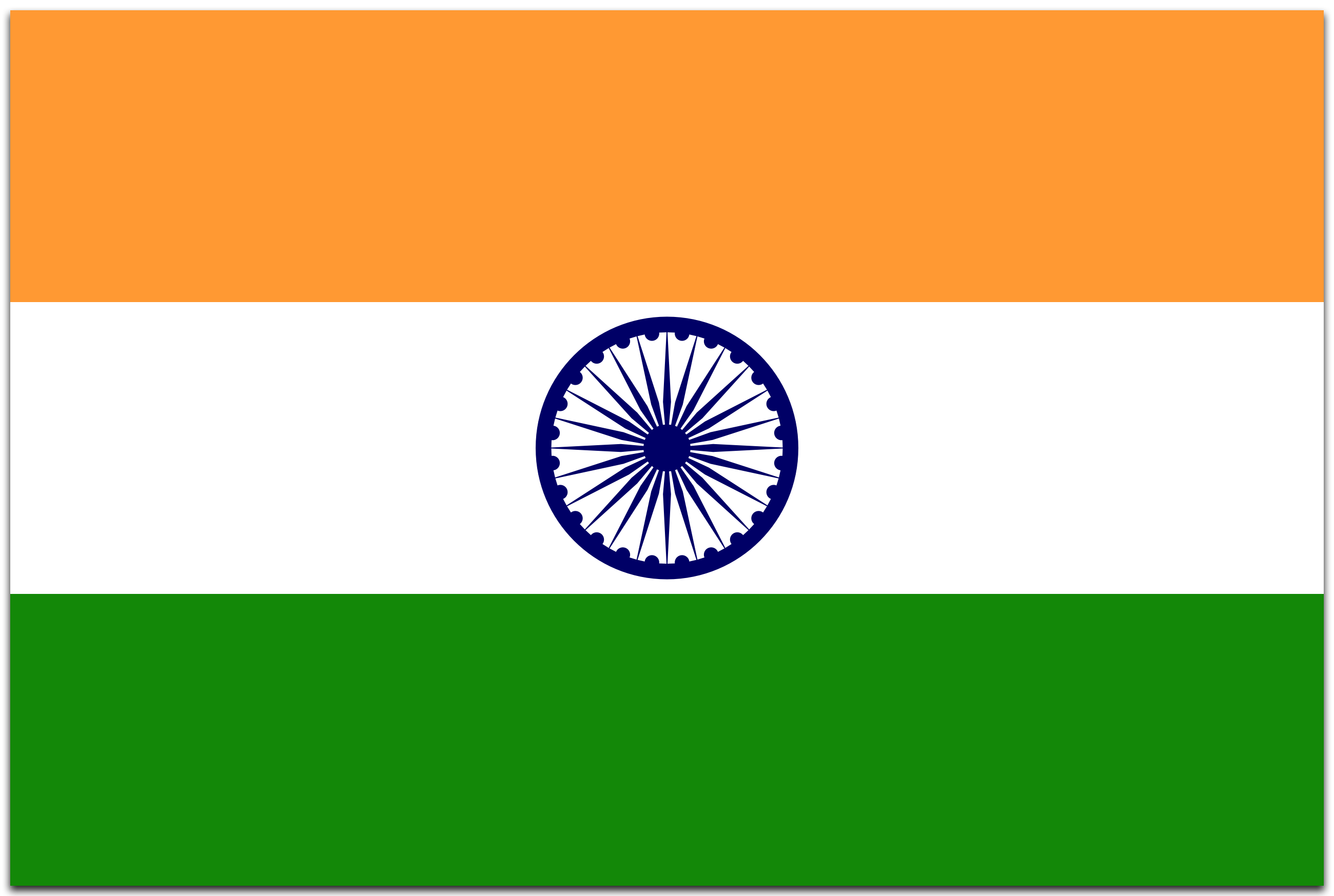India Flag
Nickname: तिरंगा ('tricolor') |
Designer: Pingali Venkayya |
Adopted: July 22, 1947 |
Proportion: 2 : 3 |
| The National flag of India has three equal horizontal bands - deep saffron (Kesari) on top, dark green at the bottom and a white middle band bearing at its center the design of Ashoka Chakra in navy blue color with 24 equally spaced spokes |
Saffron (Kesari) stands for the strength, courage and sacrifice of the Indian people
White symbolizes truth, peace, and purity of the Indian culture
The Ashok Chakra (wheel) represents the righteousness, progress, and perpetuity. The 24 spokes of the wheel represents the 24 hours of the day
Green represents fertility, growth, and auspiciousness of the land.
| India Facts | India Pics | Flag Rules |
India saffron (Kesari) stands for Hindu and Sikh religions
White symbolizes Christianity and Jainism
The Ashok Chakra (wheel) represents Buddhism
Green represents Islam.
| India Maps | India Pics | World Flags |
The National flag of India was adopted by the Constituent Assembly on 22 July 1947, when it became the official flag of the Dominion of India. The flag was subsequently retained when India became a republic.
| India Facts | India Maps | India Pics |
The resulting flag was called Swaraj flag and it was designed by Pingali Venkayya with suggestions from Mahatma Gandhi and Lala Hans Raj Sondhi. It became the official flag of Indian National Congress Party at its 1931 meeting. When India was about to get its independence, the flag was modified and was adopted as the National Flag of India.
| India Facts | India Maps | India Pics |
| India Facts | India Maps | India Pics |
Mahawar stopped weaving around 1965 and began working as a daily-wage labourer since his work got neither recognition nor reward.
| India Facts | India Maps | India Pics |
| India Facts | India Maps | India Pics |
1st quarter: state emblem (the Lions of Sarnath) to represent national unity; 2nd quarter: elephant from Ajanta Caves to represent patience and strength; 3rd quarter: scales from the Red Fort, Old Delhi to represent justice and economy; 4th quarter: lotus vase from Sarnath to represent prosperity.
| India Facts | India Maps | India Pics |
| India Facts | India Maps | India Pics |










